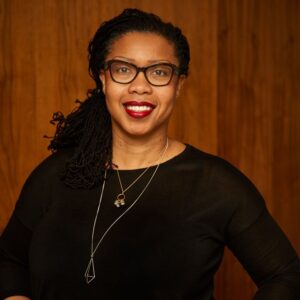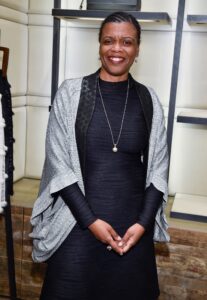
Elizabeth Dowdeswell, lieutenant-governor of Ontario, Canada, kicked off a celebration of Black History Month with an empowering discussion on the role of Black leadership and systemic barriers in the progression of arts and culture sectors in Canada.
The panel consisted of speakers Gaetane Verna, director of the Power Plant Contemporary Art Gallery; Shelley Falconer, president and CEO of the Art Gallery of Hamilton, Ontario;Karen Carter, executive director, MacLaren Art Centre; and Josh Dyer, director of marketing, Museum of Toronto, who was the moderator.
Monday’s online event was streamed live via Zoom and YouTube. It was an informative and enlightening 90-minute conversation that left the virtual audience wanting more.
One of the most notable exchanges centered around the importance of museums in welcoming a diverse crowd. Dyer posed the question to the panel from a marketing perspective, asking if they were aware of their audience. This prompted interesting perspectives from the panelists.

“I grew up in a mixed home. My father is a Black Jamaican and my mother is a white Jewish European and all of their friends that used to come in from Miguel were always very mixed up and different. So, whenever I am in an environment or room that is all anything, I am immediately concerned,” Falconer said.
Falconer, who has more than 25 years of experience as an educator, consultant, curator and administrator, spoke about the lack of diversity support from audiences.
“The value system of museums that we represent and where they come from are supposed to be about equity, your community, and sharing knowledge, which I think is at the heart of it and where I still feel that we have a lot of work to do. When you look at who goes to our institutions, the data is really clear, it does not matter what community you are in, the audience tends to be white,” she said.
Gaetane Verna, who was previously the executive director and chief curator of the Musee d’art de Joliette Art Museum from 2006 to 2012, chimed in with a different perspective about the museum audiences.
“I can say since I started at the Power Plant, I have seen a shift of who comes into the Power Plant because our program speaks to the world and is culturally diverse. One thing that I will never forget: when I started, I remember I said to Karen, “You know what is really interesting? I see that when I post jobs that there are more culturally diverse people applying,’” Verna said.

Verna said she was naive when first becoming director in 2012.
“Because I am kind of silly, I asked Karen, “Well, do you think it is because I am leading the institution?’ and she said, ‘Gosh you are such a fool, of course it is because you are leading the institution.’ These people now feel like maybe someone is going to actually look at them and make this a place of welcome,” she said.
However, Karen Carter, who has over 20 years of experience in the arts, shared yet another perspective.
“I think sometimes those who work in museums forget that the fundamental role of the cultural museums art sector is rooted both in the beginning. Which was about Gaetane’s point, you brought a world to a community that could not necessarily go see the world,” Carter said.
Carter said there seems to be a disconnect. “Most of us never fulfill that promise on what you are supposed to do as a cultural institution, which is to bring in the world. Historically, we have brought the world in the worst ways, most racist, inappropriate, and imperialist ways with the wrong ideas around identity. But still, bring the world. Sometimes we are holding the audience and the community back. They are there but we are not there for them,” she said.
The impact of Monday’s talk was so powerful that Daju Catel, a virtual attendee, wrote a heartfelt message in the chat.
“I found myself tearing up during this talk because I did not know it would be possible to see Black women like myself in power positions at art museums. It reinforces my faith and my future in it.”